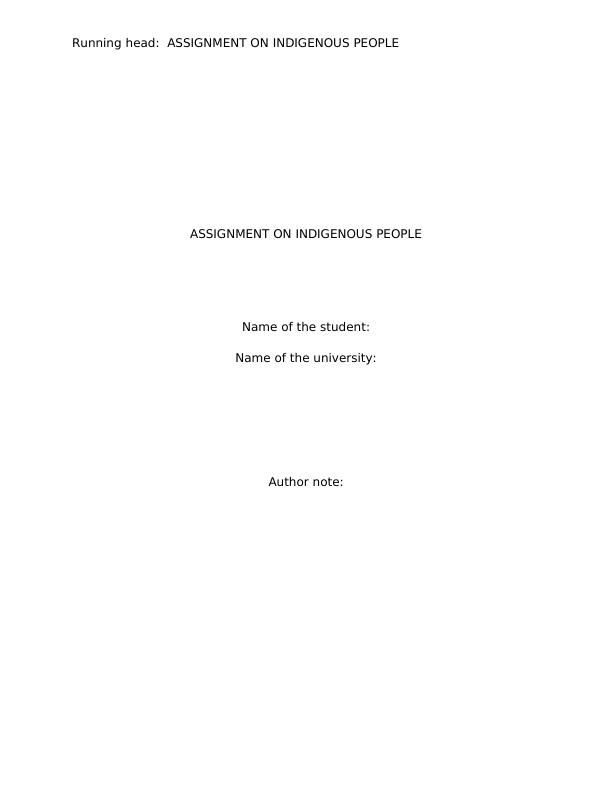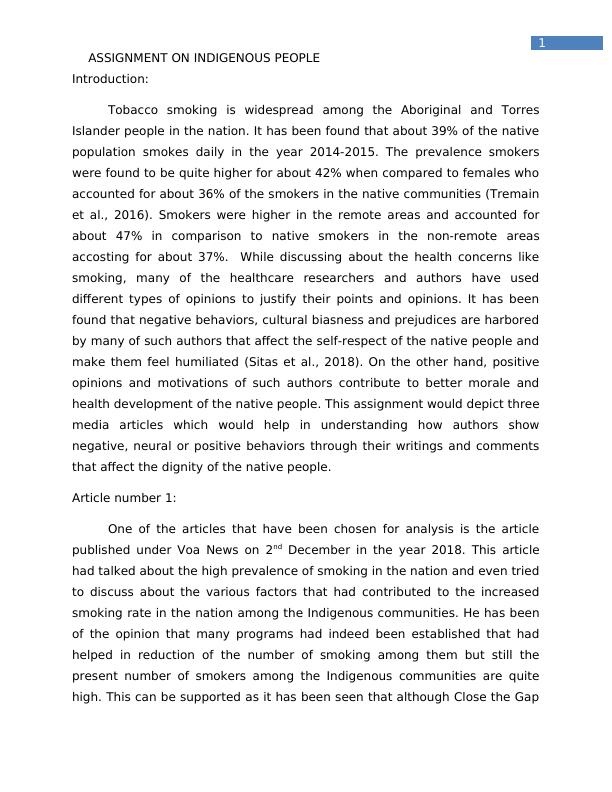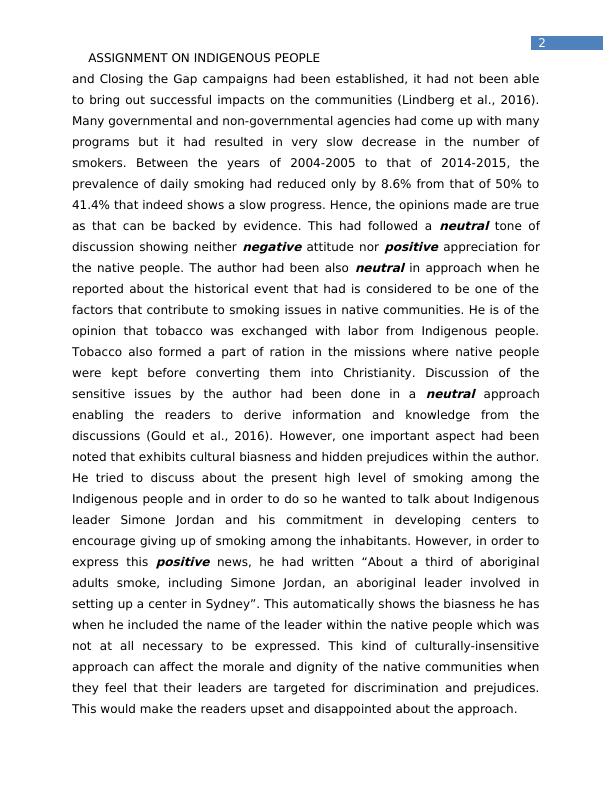Assignment on Indigenous People 2022
Analyzing the impact of media portrayal on the health and wellbeing of Australian Indigenous people
9 Pages2295 Words35 Views
Added on 2022-10-19
Assignment on Indigenous People 2022
Analyzing the impact of media portrayal on the health and wellbeing of Australian Indigenous people
Added on 2022-10-19
ShareRelated Documents
End of preview
Want to access all the pages? Upload your documents or become a member.
Smoking Among Indigenous People
|9
|2068
|181
Global Perspective of Healthcare - PDF
|15
|4498
|75
Smoking Among Indigenous People in Australia
|11
|2289
|66
Prevalence of Asthma among Indigenous Australian Youths due to Smoking
|12
|2974
|81
Indigenous Health Perspective
|8
|2245
|421
Research Literacy for Health Practice: Assignment
|7
|1670
|33



